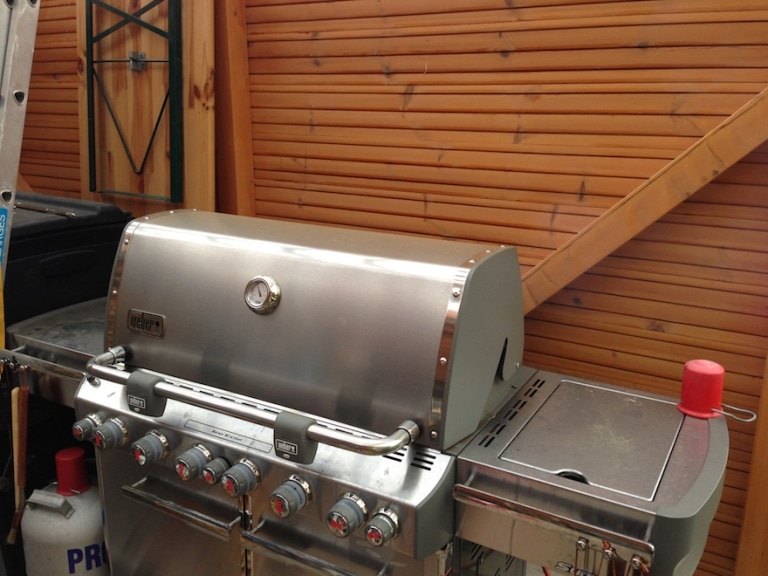
A gas barbecue has many advantages among the different types of barbecue. These include the immediate heat development after igniting the gas flame. One reason why a gas barbecue may not ignite is an empty gas cylinder. Although it is very simple, it happens more often than expected, because it is not possible to read the fill level of a gas cylinder and thus the remaining barbecue time without aids or tips. It is often believed that a pressure gauge on the gas cylinder provides information about the amount of gas in the cylinder. However, this is only true for empty cylinders – no pressure, no more gas. In fact, the pressure in a gas cylinder remains constant until it is almost completely empty. The pressure also depends on the temperature. A higher outside temperature initially increases the pressure in the cylinder. When the gas is removed from the cylinder, the cylinder cools down again (physical property of liquid gas). How do you find out the fill level and remaining grilling time for your gas cylinder?
Weighing and calculating the contents (gas cylinder fill level)
The oldest method of determining the contents of a gas cylinder is to weigh it. As propane and butane are liquid gases, they are present in liquid form in the gas cylinder before the transition to the gaseous state. The weight of liquids can be weighed. Naturally, the liquid gas is weighed together with the gas cylinder and this gives the total weight of the gas cylinder and its contents (gross). If the cylinder weight (tare) is subtracted from the total weight, the weight of the gas filling remains (net). The empty weight of the gas cylinder and the maximum filling weight of the liquid gas (propane or butane) are printed or stamped on the gas cylinder. Suitcase scales are suitable for weighing the gas cylinder. The gas cylinder is simply hung on the portable scales without the gas hose.
Barbecue gas cylinder fill levelNow you know how many kilograms of liquid gas are still available. However, this does not mean anything to most barbecuers, as they do not calculate in kg but mostly in gas cylinders, for example that a full gas cylinder is enough for 4 days of barbecuing. Now the calculated weight of the filling only needs to be converted to a full gas cylinder. If a gas cylinder weighs 7.1 kg empty and the total weight is determined to be 8.4 kg, the weight of the liquid gas is 1.3 kg. If the maximum gas quantity weighs 5.2 kg, for example, the 1.3 kg corresponds to a quarter or 25% of the total filling. In this case, the filling level and operating time of the partially filled gas cylinder is equivalent to one day of barbecuing, assuming the same barbecuing behaviour.
If you often hold a full, empty or half-full cylinder in your hand, you will quickly get a feel for the weight. This allows you to make a rough estimate of the fill level. A full gas cylinder is quite heavy according to the maximum filling and the liquid gas has hardly any room to slosh around in it. With an almost empty gas cylinder, the liquid gas has hardly any noticeable weight.
The gas level indicator
Aids are available on the market to indicate the fill level of a gas cylinder easily and without weighing. Level indicators are very widespread. They are available in well-stocked DIY stores. These are small magnetic labels that stick to the gas cylinder. They detect the temperature change in the gas cylinder as soon as there is a drop in temperature above the liquid gas level due to gasification.
Another aid works with the help of ultrasound. With such small level indicators, the liquid level can be determined very precisely and in just a few seconds. The device is pulled vertically along the gas cylinder and uses coloured lights to indicate when the liquid gas level is reached. These devices are much more accurate than the indicators.